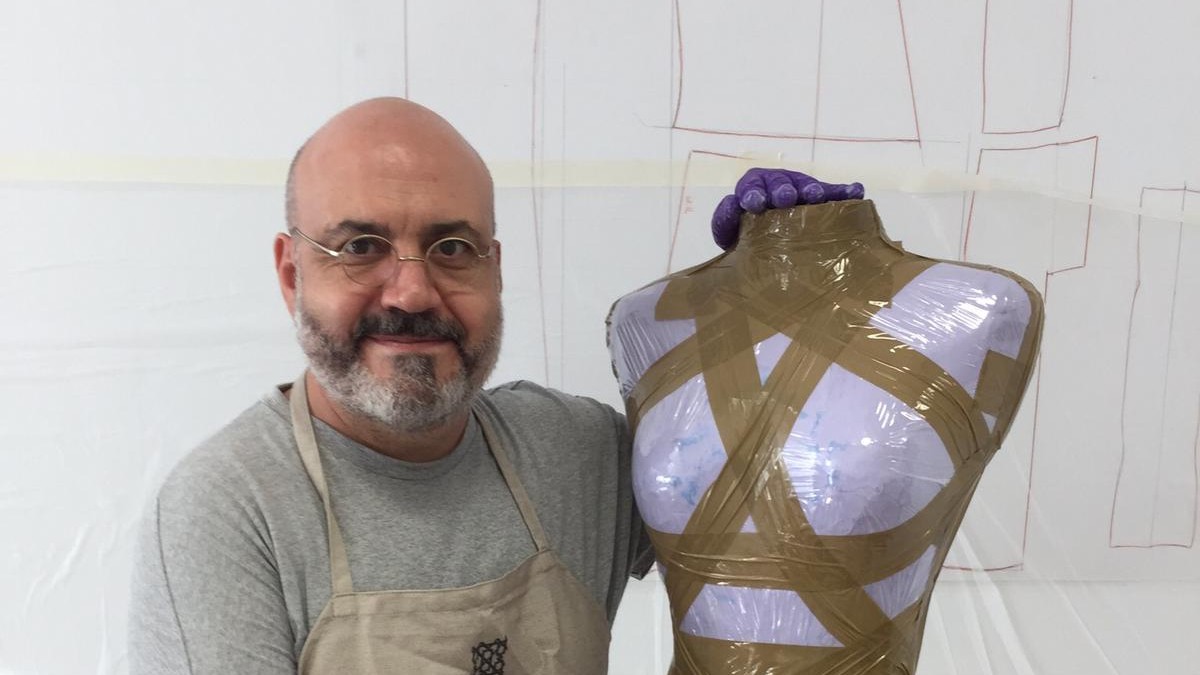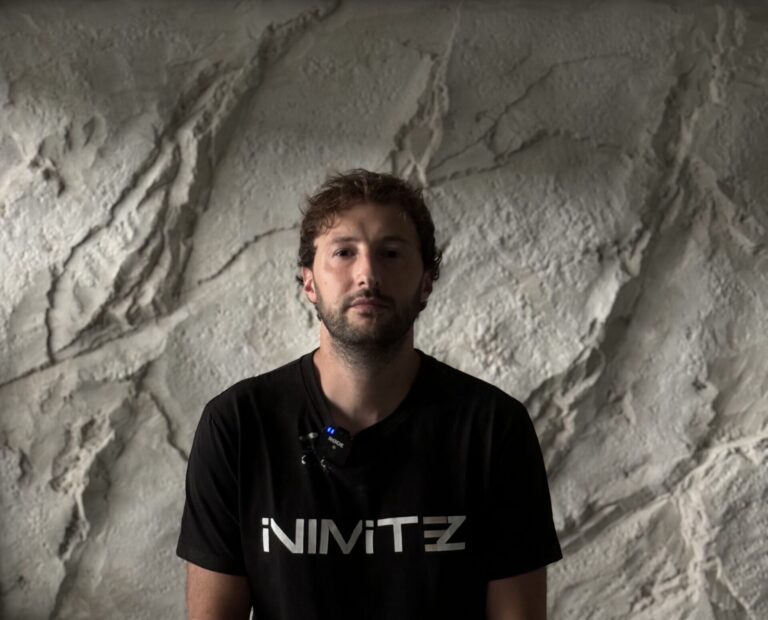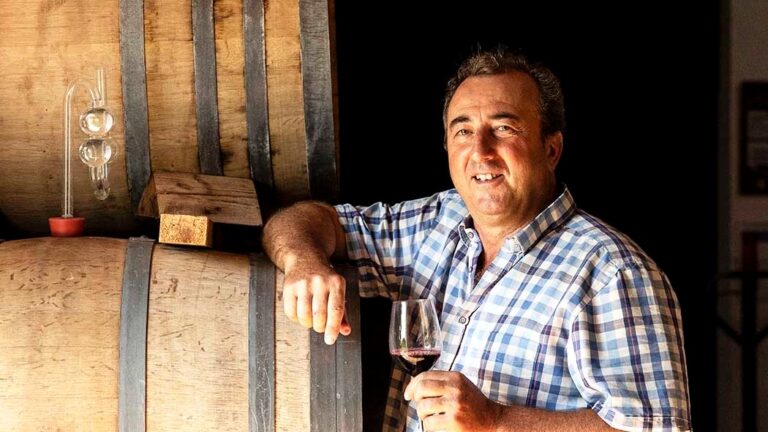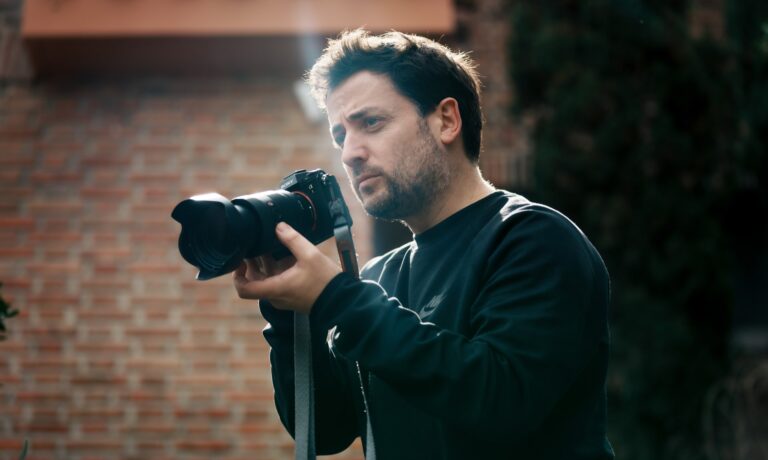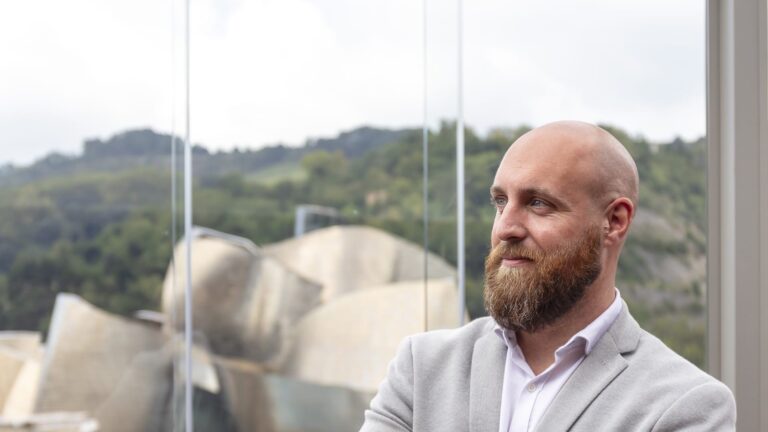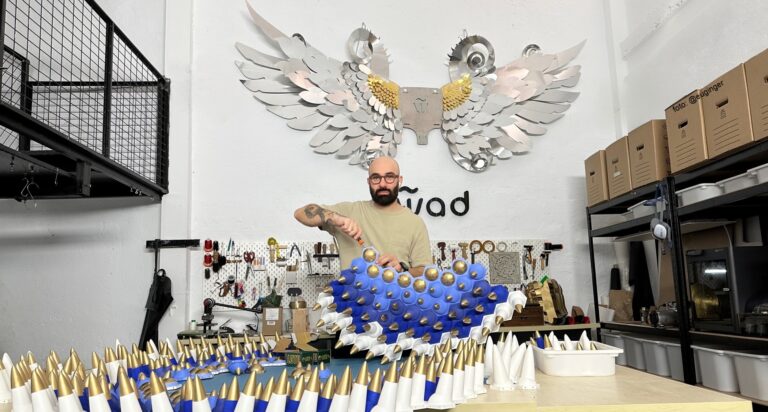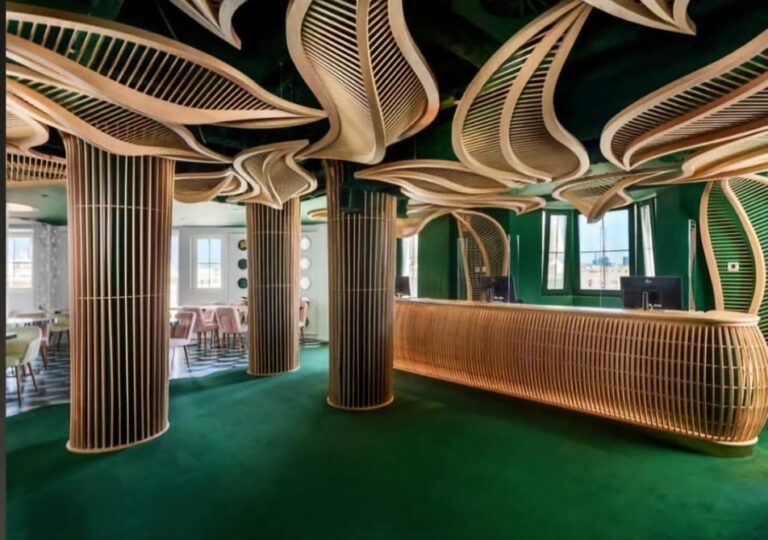Javier Martín Galán
Malasaña is a Madrid neighborhood that inspires creation. Therefore, the simple fact of having a workshop here, a space to work in, is already a firm step towards considering someone a craftsman, an artist... in short, a creator.
The nineties are key for today’s protagonist. Knowing the history of Cristóbal Balenciaga and his EISA workshop in Madrid is also key. Carmen and Emilia Carriches, who were workers in this workshop, once located next to Gran Via, taught him the characteristic sewing techniques of the Basque designer, and with them, he acquired the knowledge of building volumes that determine his designs.
For more than twenty years this fashion craftsman has been teaching his techniques in different institutions such as the Istituto Europeo di Design in Madrid, the CSDMM of the Polytechnic University of Madrid, the Centro Barreira Arte + Diseño in Valencia, and the University of Navarra.
Today, Javier Martín Galán, the mind, soul, and hands of his own haute couture project, talks to us about his life and his vocational work:
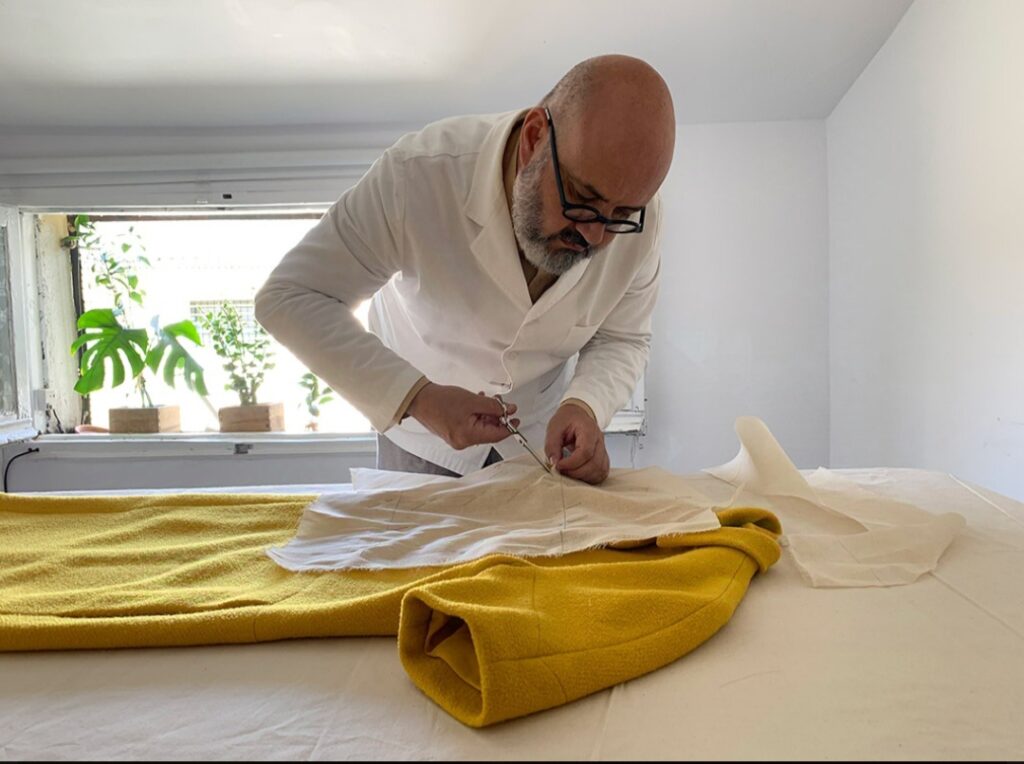
Hello Javier. Have you always had a clear inclination towards fashion?
From a very young age, I was attracted to learning how to make clothes. At the age of twelve I learned to knit and a little later cut the first garments with patterns that I took from magazines and then modified so that they resembled the clothes I wanted to have.
You come from a large family of teachers. How important is it for you to teach and spread the trade?
Both my parents and my maternal grandparents were teachers and teaching has been a natural fact in my home. I did not think of dedicating myself to teaching, but various circumstances put the opportunity in front of me and I have discovered that I like it and it seems that my students do too.
I think that it is essential to transmit knowledge, as well as never stop researching and learning. When I was little I wanted to learn how to make clothes and it was difficult for me to find help. That’s why now I never leave questions unanswered. Whenever I have that information I feel that the natural thing to do is to share it.
Do you have any hobbies outside of your work?
Of course, I love plants, my dream is to have a garden like the one I had when I was a child.
Can you tell us what ‘Nihil Obstat’ is?
It is a Latin aphorism that means “Nothing prevents anything”. At one point, I left the Sybilla brand to found, together with my partner Armiche Rodriguez, this new sewing company. It was a very beautiful project and we did a good job, but it is difficult to be a small company, the economy only thinks about large projects with a lot of capital movement. Even so, I fondly remember thinking about the dresses with the clients, choosing the fabrics, the fittings… Later, they proposed to me to be part of the DELPOZO team and unfortunately, I could not combine the two jobs.
Is there any collaboration that you have an indelible memory of?
There are many beautiful memories in each stage and I have very good friends that I have almost always met at work. For example, during the Nihil Obstat stage, I remember the first time I visited New York to try on some dresses for Julianne Moore. I have gone many other times since then, always to work on the Trías and DELPOZO shows.

How often do you travel around Spain? Have you taught any courses outside our country?
I constantly collaborate with a multitude of Spanish educational centers of different kinds, from universities to small academies that organize monographic courses. I love traveling by train and almost every week I am in a different city: Málaga, Ávila, Valencia, La Coruña, Tarragona, Zaragoza…
What value do you give to pattern-making within all creative processes?
Pattern making is the foundation of any garment, no matter how simple it is, it is the blueprint of the building, the craft of sewing tries to achieve a certain volume from a flat material, and the pattern is the key for that plane to become three-dimensional.
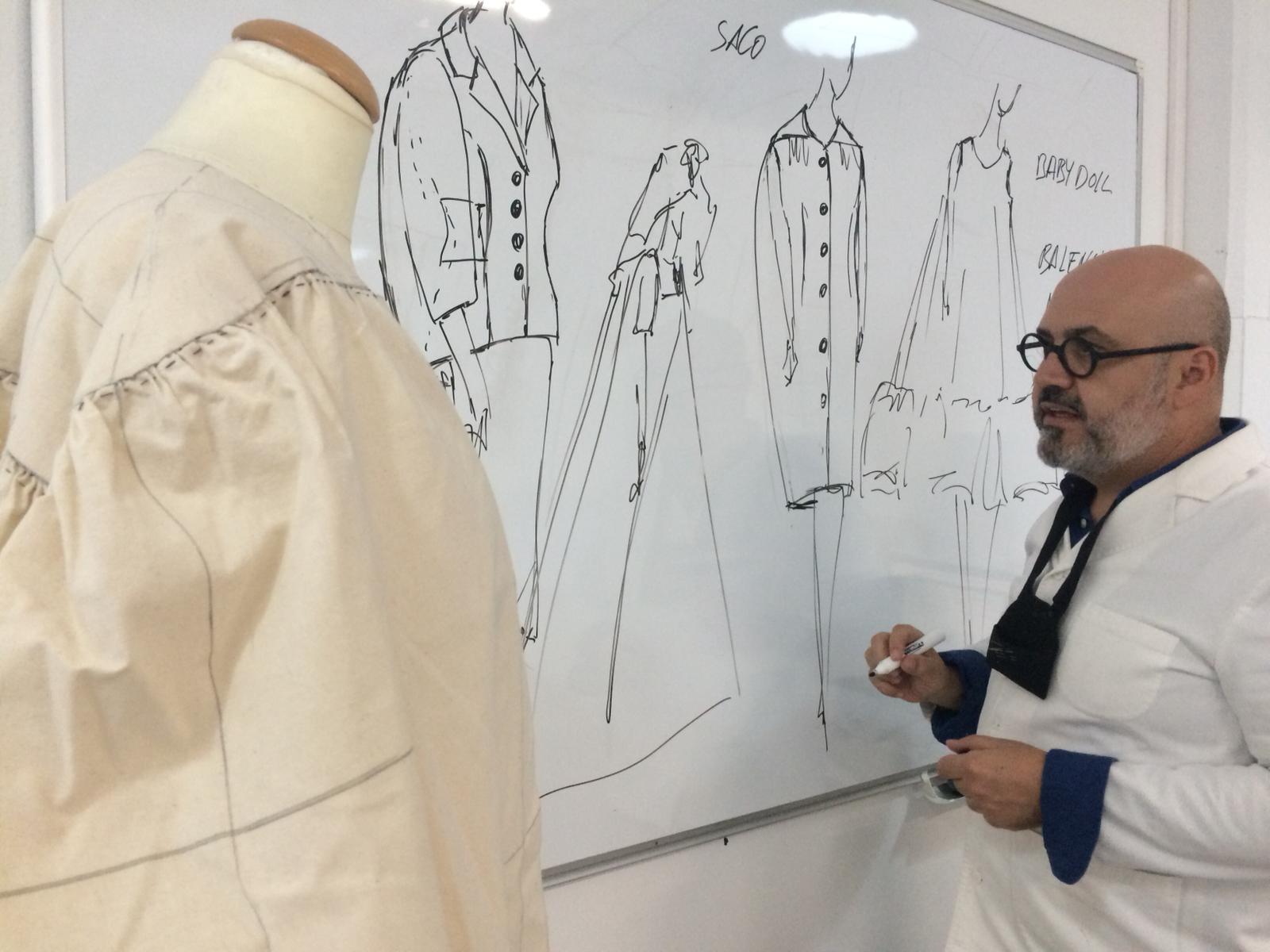
Which historic fashion designer would you like to have spent a few hours alone in the studio with? What would you ask him or what would you talk about?
Obviously with Cristóbal Balenciaga. When he died I was only two years old, but by chance, two of his disciples (the Carriches sisters) were my teachers for many years, and through them, I began to admire him. In my opinion, apart from being a genius who quietly carried out an aesthetic revolution, he was also a great technician and knew perfectly well what he could achieve with each material. I would have loved to be able to ask him many questions that his creations still pose to us, to ask him how he achieved his volumes.
What is your favorite corner of Madrid?
The Royal Botanical Garden. It is an oasis in the center of the city, far from the hustle and bustle of overflowing tourism.
Our previous protagonist,Assaad Awad, has asked this question: What does sustainability mean in your area of work and how do you try to achieve it? Do you think we will get there in time or is it just a marketing campaign to cover up the disaster created by ‘fast fashion’ and accelerated consumption?
Sustainability has become a central theme when developing the study program in any educational center. In the university centers I work with, we always propose that at least a third of the students’ projects be carried out with reused material, both fabrics and garments that are given a new life. In the courses I teach at the Balenciaga Museum, the materials come from stocks that have already been manufactured and cannot be reintroduced into production chains because they would not have continuity.
In my modeling courses, I work with a family business in Barcelona called Textil Torné that produces certified fabrics and also has a line of recycled fabrics resulting from research work in which I have put my small grain of sand.
We are increasingly aware of the damage that excessive consumption can cause. We all know brands that strive to make more sustainable production and we also know those that do not. It is up to us to choose and educate so that the new generations are aware of what their purchasing choices can mean.
Do you have a favorite plastic artist?
Yes, of course. If we go back in time, I am moved by Michelangelo's sculpture. On a contemporary level, I really like the work of the painter Sigfrido Martín-Begué.
Can you leave us a question for the next protagonist?
Yes, where did you spend the best vacation you remember?

